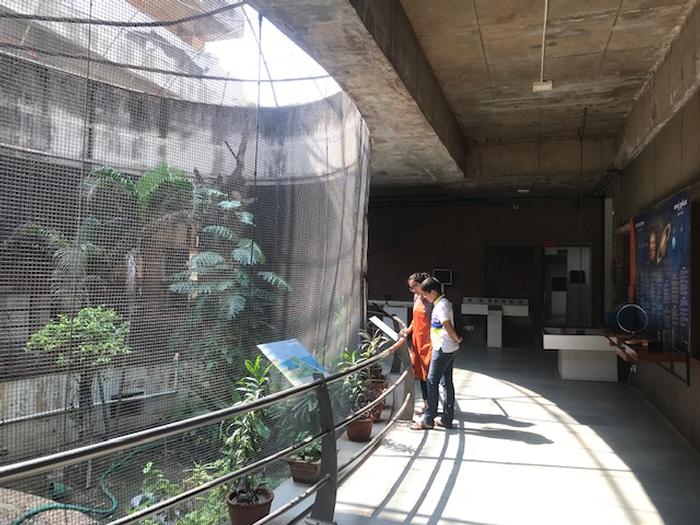Poonam Parikh and Khushali Haji - ProposalAhmedabad: Growing through a History of Community and ConflictPreface As we analyse civic buildings of communal importance that foster intellectual life within our city, the architecture student in our pair enables us to engage with the design and built aspects of the selected buildings. The urban design student counterpart helps further trace their relationships with the city’s fabric and socio-political history. Proposal Ahmedabad is a city of controversial history. Revered as ‘The Manchester of India’, ‘The Land of Gandhi’, and ‘Modi’s Seat of Power’, here, the River Sabarmati flows with stolen waters of the Narmada and splits the city into two parts: The Historical East and the Progressive West. In the Historical East lies the dense fabric of the old walled city, dotted with industrial expanses and chawls of the lower income groups. Conversely, the Progressive West sprawls with residencies of the upper classes, the academic belt and booming tertiary sector. Though starkly different, both share a history of turbulent communal unrest between religious groups. This animosity often resulted in bloody riots, destruction and pillage, having the most serious repercussions on lower income groups. Jostling against this history of acute communalism and exclusion, we uncover two buildings that contest social tensions by uniting people under a civic service that prods them to look beyond their differences. Representative of different sides of the city, both engage with distinct disciplines that encourage intellectual life. The Progressive West: Vikram Sarabhai Community Science Centre (VASCSC), 1960 Founded by the eminent space scientist it is named after, this centre aims at stirring interest in scientific disciplines, stemming from Ahmedabad’s vision of becoming a progressive modern city. Situated amidst an educational and cultural hub, it is flanked by an arts centre, a gallery and multiple universities - becoming a crucial node within this network. A few steps into the building, you are struck by a beautiful sky lit space that forms the heart of the building. Here, one witnesses several interactive exhibits around which curious students huddle together. The central open space is framed by various science laboratories, in an intimate scale that fosters a friendly learning environment. Every landing and corner is punctuated by some installation or scientific trivia, making even the circulation an experience of learning. The Historical East: Conflictorium, 2013 Well into the 21st century, Ahmedabad was a city unscrupulously developing on the philosophy of social division, marginalising many of the urban poor. Disturbed by a city thriving on fragmentation, artist Avni Sethi, adapted a vernacular timber pol house into a provocative museum of conflict that confronts social differences through art and dialogue. Nestled inside a busy street in the old walled city, the Conflictorium is closely surrounded by a temple, a church and a mosque, drawing people of different groups to engage it. This is complemented by the, domestic aura of the old house of simple stone flooring, walls of peeling plaster and an engulfing hipped roof. The thoughtfully designed hierarchy of spaces carries users from bold art exhibits to informal discussion rooms, facilitating the reconciliation of a distressing past. In a city fraught with communalism and exclusion, how do we as architects and urban designers create spaces that cultivate a community of inclusion? The two buildings presented in this proposal are classic examples of how civic architecture serves as a platform to bridge these gaps. One envisioned by a scientist urging us to nurture the future through investigation, and the other led by an artist calling us to reconcile painful histories, both buildings persuade citizens to move across defined social boundaries in pursuit of intellectual civic spaces. References Communal space over Life Space: Saga of Increasing Vulnerability in Ahmedabad (2002), Economic and Political Weekly, Darshini Mahadevia Sustainable Communities, Sustainable Development: Other Paths for Papua New Guinea (2012), Paul James, Victoria Stead, Yaso Nadarajah The Manchesterisation of Ahmedabad (1965), The Economic Weekly, Howard Spodek Additional Help and InformationAre you in need of assistance? Please email info@berkeleyprize.org. |
|


